Ways and Means: How Schools Fund Scholarships
By
5 years ago
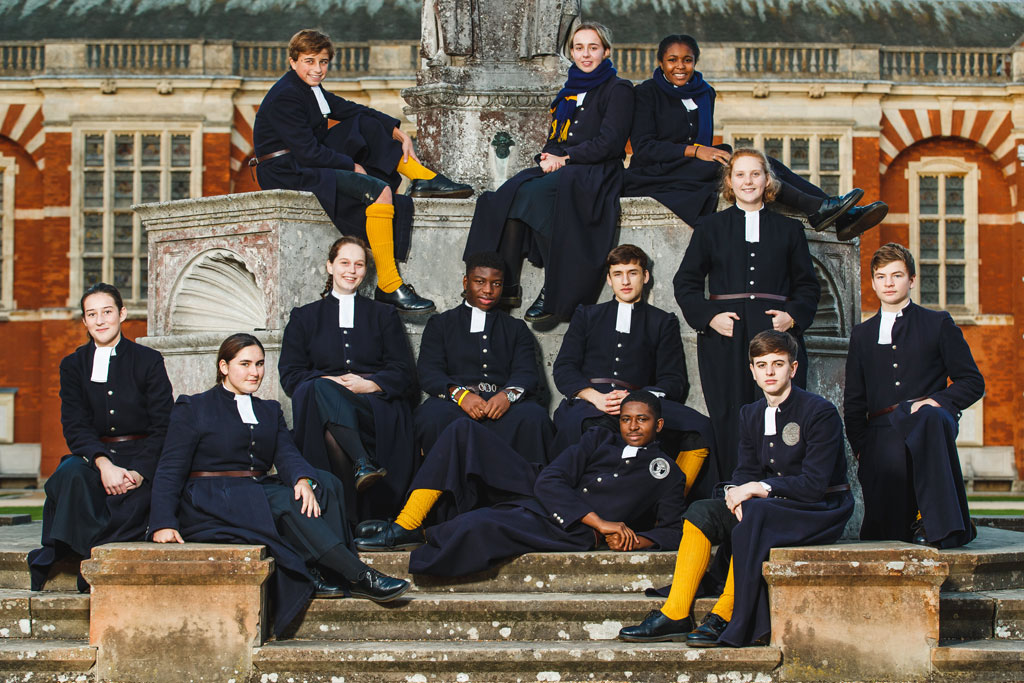
Christopher Silvester finds out how schools fund those valuable scholarships and bursaries
With the Labour Party committed to charging VAT on private school fees if it gets into government – and even Conservative Chancellor Philip Hammond apparently contemplating the same before the 2018 budget until he was knocked back by Conservative MPs – the scholarships and bursaries offered by independent schools might become even more vital to parents struggling to finance their children’s education.
Special Status
Charitable status allows independent schools to claim 80 per cent relief on business rates chargeable on the buildings they occupy and around 75 per cent of these schools have it, but the percentage is falling gradually; 32 schools joining the Independent Schools Council in 2017-18 did not. In return for these financial benefits, schools must demonstrate that they exist for the public benefit (although there is no statutory definition of this) and one way of demonstrating this is to offer free or subsidised access for those unable to afford school fees.
According to the census published by the Independent School Council (ISC), almost 43,000 children in 1,326 schools benefit from means-tested assistance.
The total value of means-tested bursaries and scholarships provided by independent schools has increased by nearly £140 million since 2011 and currently stands at £400 million
Julie Robinson, General Secretary of the ISC, June 2018
‘Schools also offer fee assistance to the “squeezed middle” because having a broad social mix which reflects our society is incredibly important,’ continues Robinson.
There is a wide variety of scholarships and bursaries available, depending on whether the school in question is an ancient foundation with a substantial endowment or whether it is a new foundation dependent on raising the necessary funds as it goes along.
Ancient Endowments
With an endowment of around £350 million, Christ’s Hospital has the largest bursary charity. The endowment funds around 60 per cent of the school’s costs and is augmented by a comprehensive fundraising programme that seeks bequests from alumni, amounting to about £2 million per annum in the last two years.
‘Christ’s Hospital continues to challenge disadvantage through transformative education, by providing free or substantially reduced fee places to over 650 students each year in a highly supportive boarding environment,’ says Headmaster, Simon Reid. This year, 2018-19, 118 pupils received a free place, 662 received some level of bursary support and 304 pay no fee or less than 10 per cent of the boarding fee. Parents of only a quarter of the school’s pupils pay full fees. There are also scholarships for academic work, music, sport, art or drama.
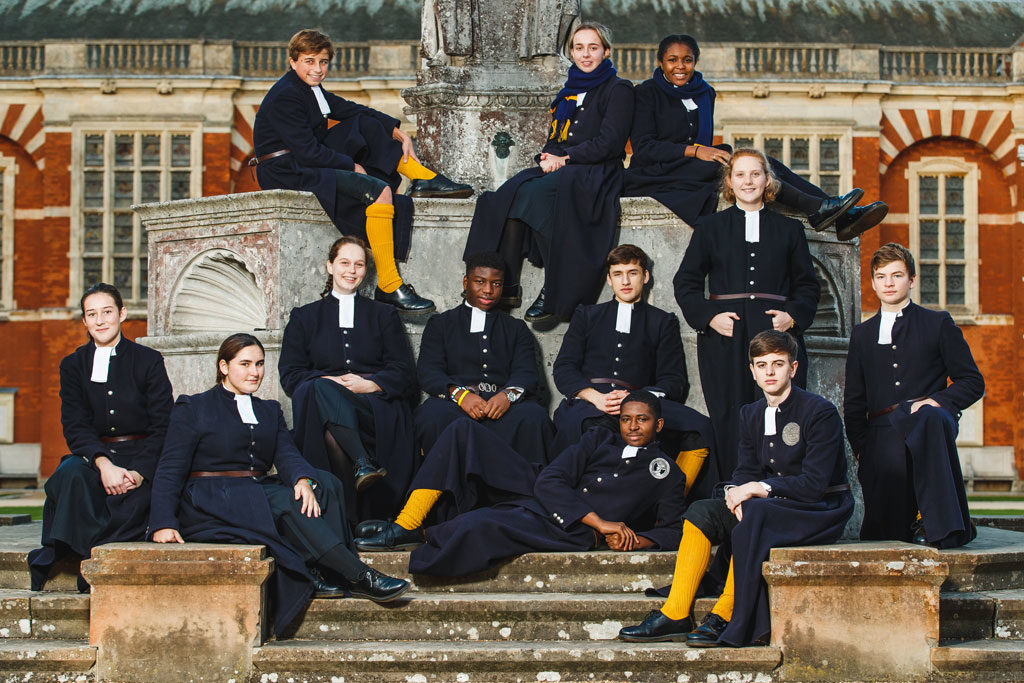
As Christ’s Hospital approaches its 470th anniversary it aims to increase the number of bursaries it provides by raising a further £30 million, says Hugo Middlemas, Director of Development, ‘to ensure that the increase in bursaries can be realised and sustained in the future.’
New Foundations
Latymer Upper School and Latymer Prep, in London’s Hammersmith, have an endowment about one tenth of the size of Christ’s Hospital at £37 million. 175 pupils (13 per cent of school rolls) receive financial assistance, in addition to 26 who receive scholarships.
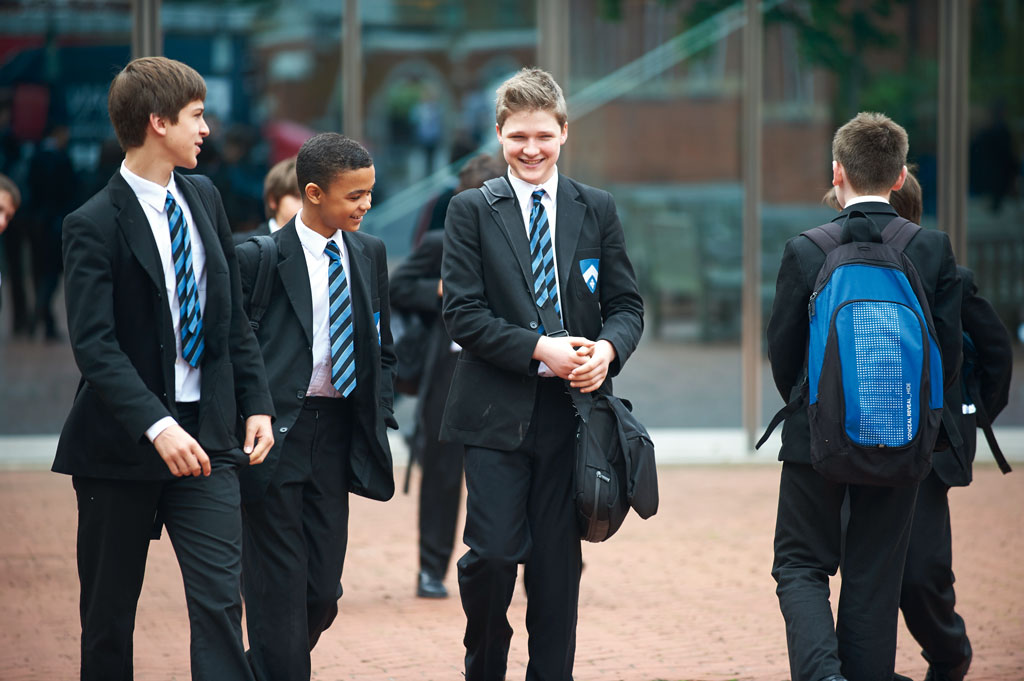
Latymer’s ethos is as strong today as it was almost 400 years ago when Edward Latymer left part of his wealth for the clothing and education of ‘eight poore boyes’ from Hammersmith. The school’s Inspiring Minds campaign aims to raise £40 million by the time of Latymer’s 400th anniversary in 2024. Half will be for endowment (the capital will be preserved and the annual return spent on funding bursaries) and the other half will pay for current bursaries (to fund a bursary for one pupil’s time at Latymer). ‘By 2024 we aim to have raised enough funds to be able to offer one in four of our pupils a means-tested bursary,’ says Sian Davis, Communications Manager of The Latymer Foundation.
Fundraising 101
The scope of the fundraising is wide-ranging. There are individually sponsored bursaries. The Annual Bursaries Appeal receives donations from such small-scale events as cake sales, charity runs and lectures. A Prep Bursary Fund hosts cinema nights, cake and plant sales. There are events organised by RAISE, a pupil-led bursary fundraising club; Latymer Parents’ Gild trips and activities, such as a Christmas Fair; and large-scale events for alumni and friends of the Foundation, such as the Spring Gala dinner and the Great Latymer Dinner Party.
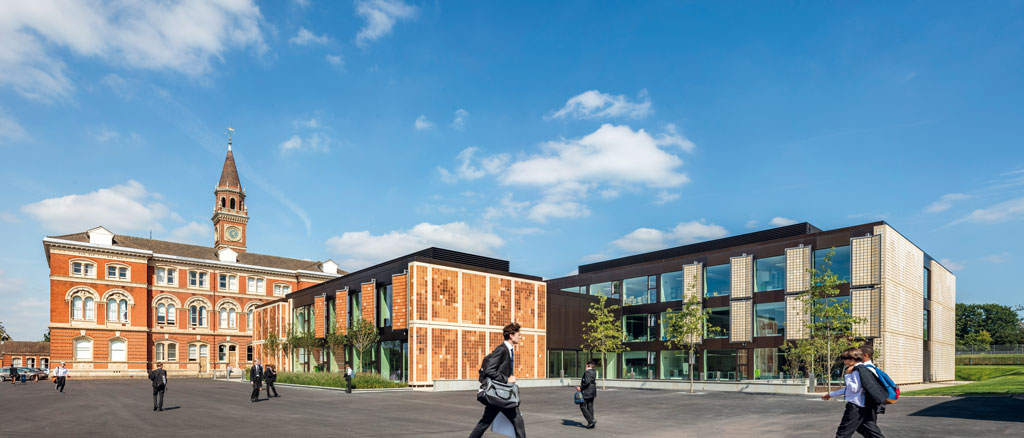
Two other London schools with a significant philanthropic heritage are Dulwich College and Alleyn’s School, both of which belong to the same foundation, alongside James Allen’s Girls’ School, and derive income from the distribution of the Dulwich Estate and from the Dulwich College Bursary Fund. Edward Alleyn founded his College of God’s Gift (the gift of love) in 1619 for the education of 12 poor scholars and the Dulwich Estate was originally his manorial estate.
Over 30 per cent of boys at Dulwich College received some financial support. ‘The headmaster has announced our ambition for 50 per cent of school pupils to be in receipt of fee relief, with an increasing number receiving means-tested deep bursaries over time,’ says Jane Scott, Dulwich College’s Director of Communications.
Each year over £2.5 million is granted to support bursaries and around £1 million is awarded in scholarships.
Jane Scott, Dulwich College’s Director of Communications
Alleyn’s School provides financial assistance to 35 per cent of pupils and it is the school’s ambition that 50 per cent of pupils will eventually receive scholarships or mean-tested bursaries. In 2017-18, £3.1 million was awarded to bursaries, and in 2018-19 this will increase to £3.4 million, representing 188 means-tested bursaries, out of which 60 will cover 100 per cent of fees.
Out of 879 pupils at UCS Hampstead, 58 are on full or partial means-tested bursaries, and 34 are on music scholarships worth discounts of ten or 25 per cent and, in special cases, 50 per cent. The school’s current outlay on bursaries is £1,144,000, rising again next year.
Since UCS Hampstead has no endowment, it must find the money to pay for bursaries from other sources, explains Edward Robert, Assistant Head and Director of Partnerships and Public Relations. The school has a members-only sports club, UCS Active (founded in 2007 when the Sir Roger Bannister Sports Centre was opened), which makes use of the school’s sports facilities in the evenings and at weekends, when they are not being used by the pupils. Its 2,700 members live in the local community or have a close connection to the school.

During the holidays and at weekends, the school rents out some of its facilities for external events and functions. The Great Hall and the refectory have been used for wedding receptions and as film sets. Then there are donations from a sister charity (The Frognal Educational Charitable Trust) and from alumni. The UCS Development Office intends to sustain and increase bursary provision over time.
Full Flexibility
Lancing College, on the South Downs in Sussex, operates a mixed programme of scholarships and bursaries. Normal academic competitive scholarships are available at third and sixth form entry for music (with an additional organ scholarship in some years), drama, art and sport (including a specialist cricket award). There is no set number of awards, as the school prefers to maintain standards of excellence in each pool of applicants.
‘We might have 30 in any year group of 120 that have some sort of scholarship or award,’ says Diana Cree, Head of Admissions, Marketing and Development. Forty-two pupils are in receipt of a Ken Shearwood award for all-rounders, named after a beloved member of the common room from 1952 to 1996. Most scholarships offer a ten to 15 per cent discount on fees, but this can rise to 25 per cent. All of these awards are funded by the school itself.
Towards the end of 2017 Lancing launched a campaign for ‘foundationers’, pupils from the state sector who are of sufficient academic quality to thrive at the school. The current campaign has a target of £3 million, of which £2 million has already been raised, and this will fund ‘transformational bursaries’ for 25 pupils to take them all the way through the school (from 13 to 18) as well as providing additional monies for school uniforms and school trips.
‘We are trying to fill five a year,’ says Cree. ‘This year we filled three at the third form and two at the sixth.’ The campaign is funded by donations, large and small, and once the £3 million target has been achieved the school intends to roll it over and raise another three million.
‘Lancing has done transformational bursaries quietly for many years, but our Headmaster, Dominic Oliver, is absolutely determined that this is a central part of what the school should do; our way of having a really diverse population in the school, but also of transforming the lives of young people.’
A Winning Niche
Beyond general scholarships and bursaries, many schools offer specific awards in specialist areas. For example, St Edward’s Oxford, which was founded in 1863 and went co-educational 20 years ago, has announced two free places for children at local state schools to study for the International Baccalaureate. These free places are open to current year ten pupils who live close enough to St Edward’s to be a day pupil. Pupils who undertake the IB must study six subjects, consider the theory of knowledge, write a 4,000-word extended essay, and take part in creative, active and volunteering pursuits.
The IB is rarely available in the state sector, so these funded places at St Edward’s are a fantastic opportunity for current year ten pupils in local state schools who are keen to broaden their horizons and keep all options open.
Dr Deborah Outhwaite, a teacher at the University of Warwick who researches the IB
Dulwich College offers its Sir Joseph Bazalgette Scholarship – named after a former pupil who designed London’s sewerage system in the 19th century, to talented mathematicians or scientists.
In Dorset, Milton Abbey School, with a reputation for scooping up less academic or dyslexic boys and turning out a raft of entrepreneurs, is expanding its offering this year (especially in sport). ‘I think we’re going to be the only school offering specialist elite Golf and Road Cycling Scholarships, which we’re able to do with the on-site golf course and PGA Pro, plus a new indoor cycling centre we’ve opened this year,’ says Head of Marketing Nick Cloke.
Down the road, the Catholic girls’ boarding and day school St Mary’s Shaftesbury, offers a variety of special discounts, scholarships, and bursaries. Children from military families and Catholic prep schools receive a ten per cent discount off fees. There’s a scholarship worth a 20 per cent discount for one girl from select Catholic non-fee-paying priory schools, which can be supplemented by a means-tested bursary. Academic, drama, music, dance and sports scholarships, as well as the Mary Ward All-Rounder, can be applied for at the ages of nine, 11, 13, and 16.
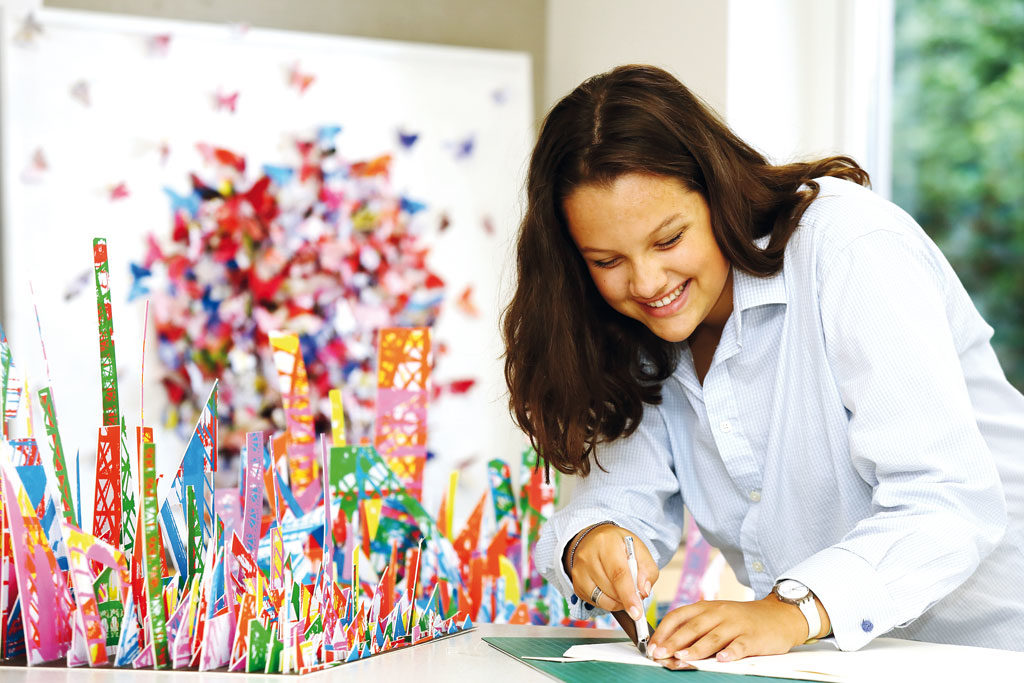
‘Unique to St Mary’s, is the Dance scholarship,’ says Headmistress Maria Young.
Dance is offered in partnership with TLW Dance, a specialist dance school which attracts girls, some of whom are elite dancers, and some from abroad to benefit from a specialist elite dance training programme for a minimum of six hours per week.
Bruern Abbey, a weekly boarding prep school in Oxfordshire that specialises in preparing boys with dyslexia for Common Entrance, faced a difficult situation when the father of a pupil who was halfway through school, died. Knowing that switching out would have been traumatic for the boy, the school found the money to pay his fees, but it impelled them to set up Amici Bruerni, a charity to provide means-tested assistance for boys who might otherwise be unable to complete their schooling there.
Knightsbridge School, founded in 2006, comprises three schools: a nursery, junior school and senior school. It is only in its senior school (where pupils are aged between eight and 13) that they offer two 100 per cent means-tested bursaries through the Knightsbridge School Education Foundation, an arm’s-length charity founded in 2008. ‘Candidates need to have something they do well,’ says Headmaster Magoo Giles. ‘The bursaries cover two years of school fees plus uniform, and can include extracurricular activities.’
The Foundation is one of three charities to which the Parents’ Association makes donations. It benefits from an annual fundraising dinner and, when their children start at the school, parents are invited (though not compelled) to commit to giving a percentage of their deposit to The Foundation when their children leave.
The many different options detailed above demonstrate that independent schools are committed to social diversity and social responsibility while fulfilling the demands of parents seeking a private education for their
children in a free society.
This article was originally published in School House: Scholarships & Bursaries Magazine in January 2019.
READ MORE: What’s the Difference? School Scholarships and Bursaries Explained | School News: Royal Mail, Mad Musicals and Traditional Playtime



